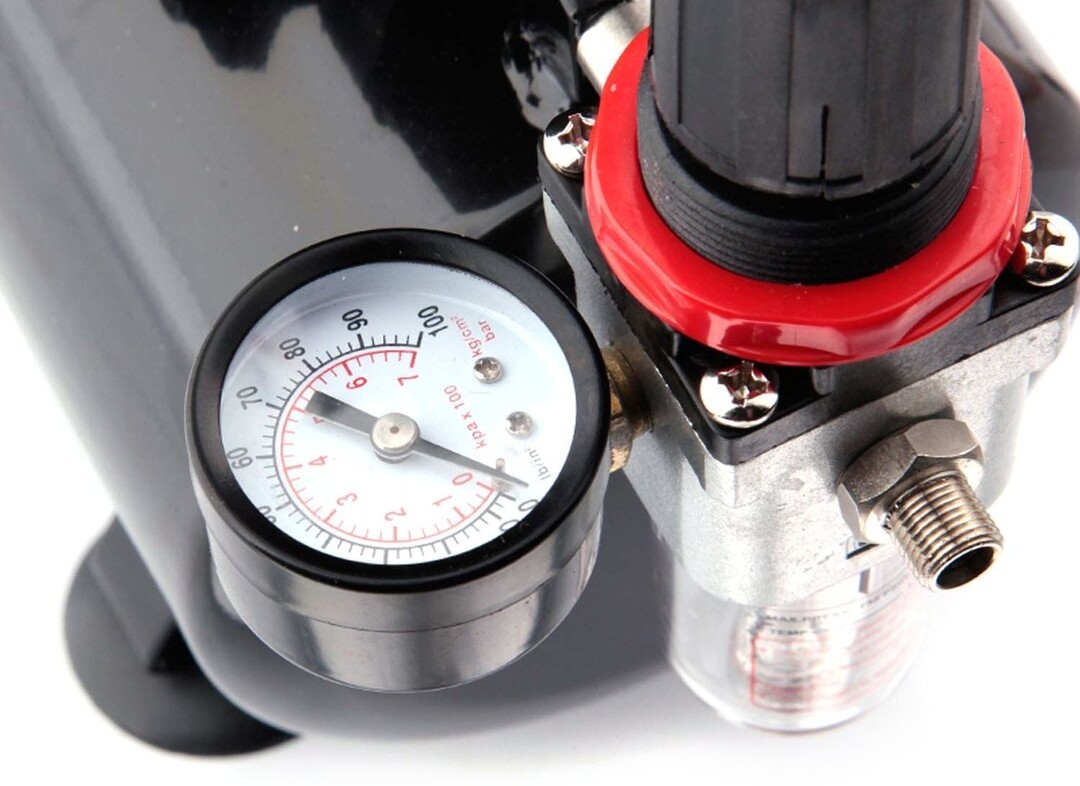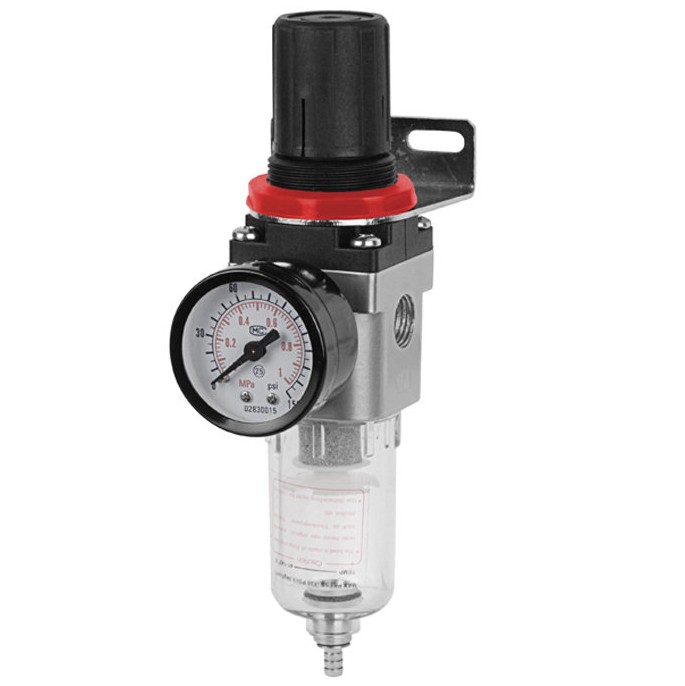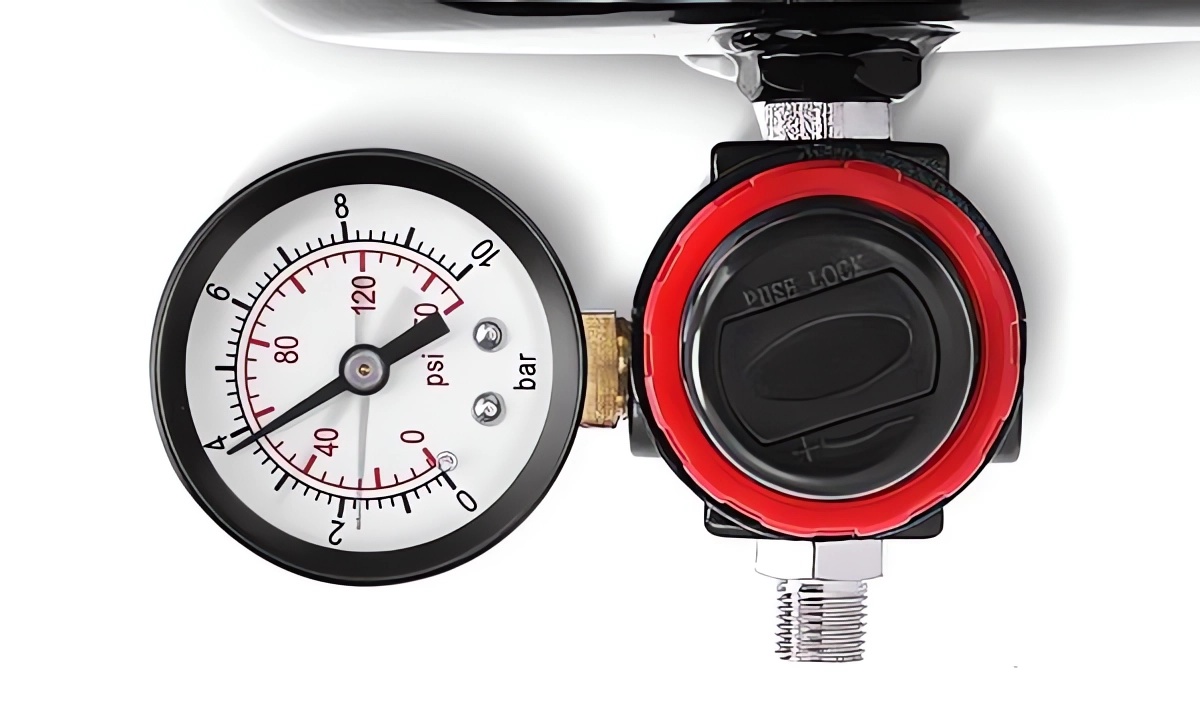Adjusting the pressure regulator on an air compressor can be a tricky task, often leading to confusion. Our comprehensive guide walks you through the process in detail, offering clarity and answers to common questions. We aim to cover everything you might need to know about air compressor pressure regulators, including solutions to the most typical issues users encounter.

What Is a Pressure Regulator?
Before diving into how to adjust an air compressor regulator, it’s crucial to understand what a pressure regulator is and what it does. If it isn’t obvious by the name, a pressure regulator’s role is to regulate and control the air pressure of your compressor.

The pressure regulator consists of three main components: the regulator body, the pressure gauge, and the regulator knob, which can be either simple or T-shaped. Activating the pressure regulator engages the valve inside the regulator body. This mechanism then adjusts the airflow to the air tool by either increasing or decreasing it, while the gauge displays the current air pressure.
Some air compressors, especially the large ones, will come with multiple regulators. They can be adjusted according to individual purposes using different regulators. Small compressors like airbrush compressors typically feature only one pressure regulator.
How To Adjust Air Compressor Pressure Regulator?
Ensure your air compressor is installed with the correct settings prior to adjusting the pressure regulator. Following the instruction manual is recommended, as each air compressor model varies and may have different installation requirements.
Once you’re sure that everything is properly set up, you can proceed to adjust the pressure regulator. Follow these three steps below to do it without any hassle.

1. Attach the Air Tool to the Air Hose and Then Connect It to the Compressor
Typically, the outlet thread size on an airbrush compressor is 1/8″ BSP (British Standard Pipe). If you need a 1/4″ BSP or another NPT (National Pipe Thread) size for a different air tool, adapters are available to adjust the outlet size accordingly.
2. Turn on Your Air Compressor
Plug the compressor into an electrical outlet and activate it to start the motor, which will then begin to compress air into the tank.
3. Adjust the Air Pressure Regulator
To adjust the pressure regulator on your air compressor, first locate the adjustment knob. It’s typically found on the right side of the regulator, but its position can vary depending on the model. The knob often features a locking mechanism to prevent unintentional adjustments.
To unlock the knob, pull it outwards. Once unlocked, turn the knob clockwise to increase the pressure. You will see the pressure gauge rise as you turn the knob. Keep turning until you achieve the desired pressure level. To decrease the pressure, simply turn the knob counterclockwise.

Once you’ve reached the desired pressure level, push in the knob to lock it in place. This ensures that the pressure remains constant during use.
Maintaining the Pressure Regulator of an Air Compressor
Maintaining your air compressor’s pressure regulator is crucial for ensuring optimal performance, just as with the overall upkeep of the air compressor itself. Neglecting maintenance can result in the underperformance or outright failure of pressure regulators.
A common issue is the development of cracks in the pressure regulator, which typically result from the constant pressure exerted through the regulator, causing air leaks. These leaks not only reduce the efficiency of your compressor but can also negatively affect the performance of your air tools.
Furthermore, infrequent use of your air compressor can cause the regulator to dry out, affecting its performance. To avoid such issues, it’s beneficial to operate your compressor periodically, even during periods of non-use. This practice can significantly prolong the life of the pressure regulator.
However, in case you fail to protect your pressure regulator, you can always replace it. It’s relieving that you won’t have to spend much money to change the regulator.
In cases where your pressure regulator is damaged beyond repair, replacement is always an option. Fortunately, replacing the regulator is not overly expensive, offering a cost-effective solution to maintain your air compressor’s performance.

